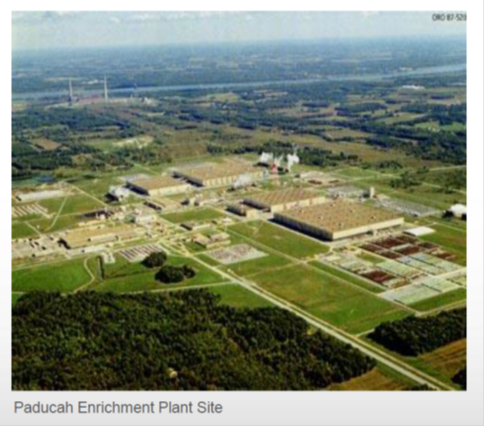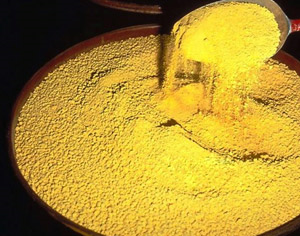Saying goodbye to Silex
Tim Treadgold writes:
Waiting for the promised global shift away from oil, gas and coal to a nuclear powered future has been costly for investors, not only because the traditional fossil fuels remain competitively priced but also because there is a new player in the energy game: renewables.
Nuclear retains a hard core of followers, and in some countries it is an essential part of the electricity-supply system, but not enough to sustainably boost the price of uranium, the fuel most commonly used in atomic power stations.
The failure of nuclear can be measured in several ways. There are the high-profile accidents (Three Mile Island and Chernobyl) and incidents (Fukushima) which have severely damaged its reputation as a safe source of power.
And then there's the uranium price which is the aspect of the nuclear power cycle closest to the portfolios of Australian investors.
Ten years ago uranium was red hot, in more ways than one. The price had soared by 350 per cent from $US30 a pound in 2003 to a record of $US135/lb in early 2007 thanks to claims of a nuclear power construction boom and widespread belief in the theory of Peak Oil – remember that one?
The power-station building boom failed to appear, partly because nuclear power plants are enormously expensive and can take decades to build, and even longer to win government approval, and then in 2008 the financial world slipped into a crisis which dried up long-term funding.
The uranium price started to recover in mid-2010, bouncing briefly to more than $US70/lb – until Japan closed all of its nuclear power stations after an earthquake and tsunami triggered a melt-down in the Fukushima nuclear plant.
Over the past two years uranium has struggled to rise above $US40/lb with the current price of $US35/lb too low for most uranium miners to make a profit, and far too low to encourage the development of new mines which require at least $US65/lb to attract investment.
Public concern about the nuclear power cycle continues to dog the industry, preventing it from gaining the traction that was once believed possible.
But the bigger issues for nuclear power and companies which sell fuel in the form of uranium, or technology in the form of smart ways to process nuclear fuel such as that developed by locally listed Silex Systems, are the price of fossil fuels and the rise of renewables.
It's the uncertain outlook for nuclear and the rapid changes underway in the energy sector which underpin our updated view of Silex Systems from Chris Booth (see below).
Some investors remain hopeful that the uranium downturn will reverse as Japan re-starts its mothballed reactor fleet but their optimism is not widespread thanks to the twin problems of rival sources of energy.
Oil, according to Peak Oil theory, should currently be close to $US200 a barrel because the supply of both oil and gas is supposed to be in terminal decline.
They're not, as every investor knows. Rather than decreasing, oil and gas production have never been higher thanks to technical innovations such as deep-sea production, the rise of globally-traded liquefied natural gas, and the unlocking of tightly-packed onshore oil and gas reservoirs commonly known as shale gas.
Rather than being seen as a leader of the energy world nuclear today is a marginal player thanks to the flood of fossil fuels, the advent of reasonably priced renewables (solar and wind) and technology developments including long-life electricity storage systems such as the lithium-air battery breakthrough reportedly achieved at Britain's Cambridge University (see Lithium breakthrough, November 4).
Uranium mining and nuclear power production, rather than being a growth industry, are today at risk of being seen as yesterday's industries, condemned to a power-supply fringe or merely a chapter in the history of electricity.
Chris Booth writes:
We are ceasing coverage of Silex Systems (SLX), which we last covered over a year ago. Since then it has been a waiting game in regards to the turnaround of the uranium market which is at significant lows since the 2011 Fukushima reactor disaster.
Silex holds the monopoly for the only third generation enrichment technology but any third party investment will only be seen when demand increases. As such we are still waiting on any outcomes for Paducah retreatment and the Wilmington plant which holds a technology partnership with the global uranium consortium GLE.
As Tim Treadgold mentions above, uranium is a tough spot at the best of times given the capital outlay required for reactor plants. With oil and coal prices so low, uranium as a fuel can't compete. This is the main reason why there is currently no compelling need to be in this space.

Source: Silex presentation
2015 summary
Given all the negativity in the market over uranium and the standoff with GLE, Silex has spent the last 12 months executing its strategy to streamline the business. It will now concentrate on its nuclear enrichment arm only to ultimately reduce cash burn to approximately $3 million per annum, down from around $30m in 2014.
The 2015 full year results show that a net loss after tax of nearly $36m was achieved, with $33.5m contributed to discontinued operations. With over $55m in cash recorded on the balance sheet, it has met its cash burn target and now has the ability to ride out any significant market downturns, which in the case of the current uranium market, may be for some time to come.
In July this year Silex announced the cessation of the solar division after a suitable buyer could not be found. Chief executive Dr Michael Goldsworthy said the board was very disappointed about the end of the solar division and said the company did not have the capital required to invest in such large scale production.
On September 15 Silex announced an agreement for the sale of the semi-conductor Translucent cREOTM licence to UK based IQE Plc (LON:AIM). As part of the deal for the technology, the commercialisation of the product will be passed to IQE meaning Silex can shut down its California plant. Silex could receive lump sums totalling $US6.5m in milestone payments. This is not a great return on the previous investment but perpetual royalties of 6 per cent would apply to any products sold thereafter.
Silex indicated in August that an outcome on Paducah could be expected within the next few months, however no update has so far been provided. The U308 spot was looking positive earlier in the year when it reached highs of nearly $US40, however has since depressed to $US36. The Separative Work Unit price (SWU) is at currently around $US60, down from highs of $US135 prior to Fukushima. The Paducah agreement depends on a positive turnaround in the market and at these prices we may not see a favourable outcome for Paducah by the end of the year.
 |
Also in August, Silex weighed into the current Australian uranium debate, submitting documentation to the South Australian (SA) Government as part of the ongoing Nuclear Fuel Royal Commission. Outlining the current benefits of the Silex technology, its submission was focused on the potential to integrate uranium enrichment processes to value add to the current refined U308 market in SA. Although any economical outcome would be a distant dream for Silex, it shows that its third generation enrichment technology is the likely way forward with advances in the industry worldwide.

U308 or “Yellowcake”. Source: www.worldnuclear.org
For Silex, the reduction in costs will keep the company in good stead for some time to come, which they will need to combat the adverse uranium market. However, with this in mind there are still some risks. Silex may have to renegotiate commercial contracts with GLE to attempt to get a commercial plant online, and finally, with the share price at such a depressed state many people are still considering the fact that GLE itself could make a play for Silex. This could spell the end of the stock which has been listed since 1998.
Final valuation
Besides the initial $US1.5m payment from IQE for the translucent commercialisation trial, there is no other confirmed business related revenue for Silex. With this in mind, we are assuming that the full transaction with IQE will go forward and the $US5m will be received at the end of the 30 month trial, combined with the ongoing 6 per cent sales royalty. With no guidance available on the royalty this revenue is assumed to cover the ongoing gap in costs for the company, approximately $US0.5m-$US1m per annum.
Currently trading at 46.5c (November 6 close), around 36c can be attributed to the $62m in tangible assets. Our final valuation for Silex is 41c based on the asset base and an additional 5c for the conservative IQE sales royalty.
The figures show there is very little downside for Silex so the risk at this stage is all in the upside. The only question now is over when market conditions become suitable. While Wilmington and any progress into the Australian market is seen as truly long term, the potential for any agreement regarding Paducah could potentially be achieved in the nearer term. If an agreement is made, we could see the stock price climb to around $1 based on assumptions (6 million SWU per annum commercial plant from 2020 and an ongoing SWU price of $US90).
To see Silex's forecasts and financial summary, click here.













